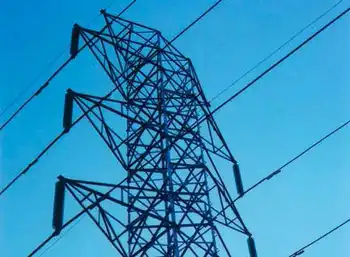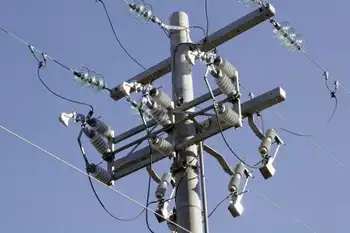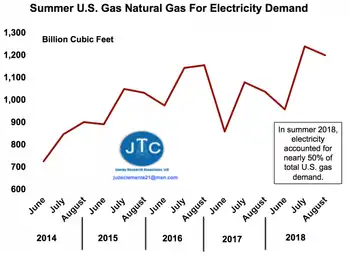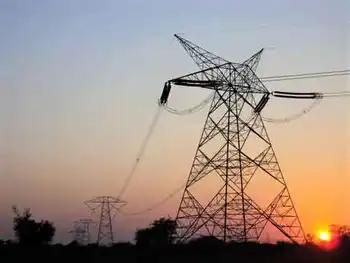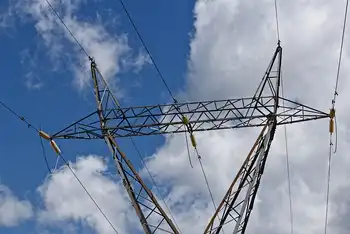Construction starts on disputed $1B electricity corridor

Electrical Testing & Commissioning of Power Systems
Our customized live online or in‑person group training can be delivered to your staff at your location.

- Live Online
- 12 hours Instructor-led
- Group Training Available
New England Clean Energy Connect advances despite court delays, installing steel poles on a Maine corridor for Canadian hydropower, while legal challenges seek environmental review; permits, jobs, and grid upgrades drive the renewable transmission project.
Key Points
An HV line in Maine delivering 1,200 MW of Canadian hydropower to New England to cut emissions and stabilize costs.
✅ Appeals court pauses 53-mile new section; upgrades continue
✅ 1,200 MW hydropower aims to cut emissions, stabilize rates
✅ Permits issued; environmental review litigation ongoing
Construction on part of a $1 billion electricity transmission corridor through sparsely populated woods in western Maine is on hold because of legal action, echoing Clean Line's Iowa withdrawal amid court uncertainty, but that doesn't mean all building has been halted.
Workers installed the first of 829 steel poles Tuesday on a widened portion of the existing corridor that is part of the project near The Forks, as the groundwork is laid for the 145-mile ( 230-kilometre ) New England Clean Energy Connect, a project central to Maine's debate over the 145-mile line moving forward.
The work is getting started even though the 1st U.S. Circuit Court of Appeals delayed construction of a new 53-mile ( 85-kilometre ) section.
Three conservation groups are seeking an injunction to delay the project while they sue to force the U.S. Army Corps of Engineers to conduct a more rigorous environmental review.
In western Maine, workers already have staged heavy equipment and timber “mats” that will be used to prevent the equipment from damaging the ground. About 275 Maine workers already have been hired, and more would be hired if not for the litigation, officials said.
“This project has always promised to provide an economic boost to Maine’s economy, and we are already seeing those benefits take shape," Thorn Dickinson, CEO of the New England Clean Energy Connect, said Tuesday.
The electricity transmission line would provide a conduit for up to 1,200 megawatts of Canadian hydropower, reducing greenhouse emissions and stabilizing energy costs in New England as states pursue Connecticut's market overhaul to improve market design, supporters say.
The project, which would be fully funded by Massachusetts ratepayers to meet the state's clean energy goals after New Hampshire rejected a Quebec-Massachusetts proposal elsewhere, calls for construction of a high-voltage power line from Mount Beattie Township on the Canadian border to the regional power grid in Lewiston, Maine.
Critics have been trying to stop the project, reflecting clashes over New Hampshire hydropower in the region, saying it would destroy wilderness in western Maine. They also say that the environmental benefits of the project have been overstated.
In addition to the lawsuit, opponents have submitted petitions seeking to have a statewide vote, even as a Maine court ruling on Hydro-Quebec exports has reshaped the legal landscape.
Sandi Howard, a leading opponent of the project, said the decision by the company to proceed showed “disdain for everyday Mainers” by ignoring permit appeals and ongoing litigation.
“For years, CMP has pushed the false narrative that their unpopular and destructive project is a ‘done deal’ to bully Mainers into submission on this for-profit project. But to be clear, we won’t stop until Maine voters (their customers), have the chance to vote,” said Howard, who led the referendum petition drive for the No CMP Corridor PAC.
The project has received permits from the Army Corps, Maine Department of Environmental Protection, Maine Land Use Planning Commission and Maine Public Utilities Commission.
The final approval came in the form of a presidential permit issued last month from the U.S. Department of Energy, providing green light for the interconnect at the Canadian border, even as customer backlash to utility acquisitions elsewhere underscores public scrutiny.





